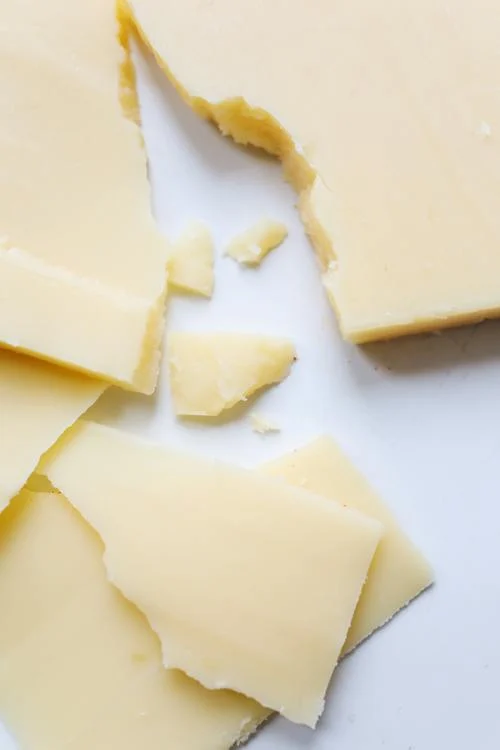Cheese is in burgers, in pastas, and in fried dishes. In fact, it can be found in almost every dish that you can think of even dishes like ice cream and cereal. Cheese is a hugely popular snack and party food and you can often enjoy a delicious cheese platter. But there is one cheese that is ubiquitous in the American diet and of course that is American Cheese.
What is American Cheese?
Cheddar, Colby, and other processed cheeses are combined to create American Cheese, including other additives to help it melt quickly. It’s frequently offered in single slices and is a preferred cheese for burgers and sandwiches. Processed Cheese, known as “American cheese,” has a moderate flavor and aroma and is often pale orange. American Cheese melts so smoothly because it contains emulsifiers, which keep the milk proteins from separating from the milkfat when it’s cooked.
The Food and Drug Administration classifies American Cheese as a “process cheese,” encompassing two distinct kinds of Cheese. One explanation is that it is a hybrid cheese created by mixing different types of Cheese. The second is that it’s a cheese to which additional substances have been added, like milk proteins, whey, or emulsifiers. If Cheese makes up at least 51% of the result, we can still call it Cheese. So, the American variety of Cheese is legitimate.
American cheese is a form of processed cheese and typically is orange or yellow but also can be white as well (the traditional original color). American cheese melts easily for all kinds of purposes including on a delicious hot dog or hamburger. Its a has a mild flavor and with a hint of salt and sweetness. It is also interesting to learn more about cheese and wine pairings.
Have you ever wondered how American Cheese came to be and why it became so popular? And is it even really cheese? Read on!
In 1851, Cheesemaking in general was transformed by Jesse Williams. Williams is credited with making the first “factory” cheese in New York city. America began to produce so much cheese it was exported to England and known as “American Cheese” but was mostly what we would today classify as Cheddar cheese.
In 1903, James L. Kraft who came from Canada, moved to Chicago with $65. He spent his money buying a horse and wagon, then started wholesaling cheese. Kraft wanted to minimize waste as he noted that cheese would start to spoil quickly in the grocery stores.
Kraft experimented with many ideas including trying to package cheese in jars. He experimented with cheese canning but then tried out something different. Kraft shredded refuse cheddar, re-pasteurized and mixed it with Sodium Phosphate and voila!we now have what we call American Process Cheese. He patented this process 1916 as the first processed cheese.
Parallel to Kraft’s work in Switzerland two gentleman named Walter Gerber and Fritz Stettler were also working on similar challenges. They were developing a brand of cheese named Emmental and had figured out that by using sodium citrate on the cheese while it was melting, the cheese would hold together perfectly. Kraft and his brother Norman though were successful in popularizing processed cheese.
American Cheese became popular among soldiers in both World Wars. At first, it was made from a mixture of cheese, namely Colby and Cheddar. By the 1930 nearly 40% of all cheese consumed was processed American Cheese. It wasn’t until 1950 that the familiar cheese slices were developed and packaged.
Owing to the success of this processed cheese, traditional cheese makers pushed the government to clarify Kraft’s product in a way that would separate it from non-processed cheese. The government did establish guidelines for labeling processed cheese products or “pasteurized process” cheese. The law specifically describes these type of cheeses as “a homogeneous plastic mass”.
You may have heard of some items being called “cheese foods” or “cheese products”. These are similar but contain very little “real” or “natural”cheese in them than processed cheese such as American cheeses.
For nearly two centuries cheese production in America has been evolving. What was once made by the local farmer became a mass factory produced product that in some cases contained very little traditional cheese. Hardly a hamburger is sold today with out a slice of American cheese on it.
Interesting Facts About American Cheese
- Wisconsin is the home of American Cheese and other varieties of Cheese. Wisconsin’s annual 500 million pounds of cheese production makes the state famous for its dairy industry. Since 1910, this US state has been responsible for more cheese production than any other. Cheese is so central to life in Wisconsin that “cheeseheads” is a nickname for Green Bay Packers fans in the National Football League. They go as far as donning enormous foam cheese hats for home games.
- American Cheese is not Cheese. Since Cheese makes up less than 51% of a Kraft Single, it is not allowed to be called Cheese. The primary ingredients in American Cheese are milk, whey, and milk protein concentrate. It’s commonly called “American cheese,” although its name is “pasteurized process cheese food.” In contrast to natural Cheese, American Cheese is not manufactured from milk but rather from a combination of cheeses.
- Although its history records could be more precise due to a lack of specific historical accounts, most agree that Emmentaler cheese and sodium citrate were used to create the original American Cheese. Although the term “American cheese” did not appear until the 1920s, its origins can be traced back to the early 1910s in Switzerland. The word “Swiss cheese” was changed to “American cheese” to win over more patriotic buyers.
- Orange, yellow, and white are just a few colors that may be found in American Cheese. American Cheese has a moderate flavor and a salty, slightly sweet flavor. American Cheese has a low melting point and a medium firmness. The original color of American Cheese is white. Because it contains several different types of Cheese—including the white cheddar used in its original formulation—it appears white. However, modern American Cheese appears yellow because annatto, a sweet and spicy flavor, is added to the cheddar and Colby. In the 1800s, this was the case, and ‘yellow cheese’ became a common moniker for American Cheese.
- American Cheese was first called ’embalmed cheese’ by its critics because one of its ingredients, the emulsifying chemical sodium phosphate, is also used to preserve corpses; many cheese critics wished for the name embalmed Cheese to be applied to American Cheese. Sodium phosphate is widely utilized as an emulsifying agent today. For this reason, cheese connoisseurs in the early 20th century pushed for the repulsive name “embalmed cheese.” However, federal officials coined the phrase “process cheese” instead.
- American Cheese is packed with essential nutritional elements. Calcium and high-quality protein can be found in abundance in American Cheese. It’s more stable than genuine soft Cheese and has a longer shelf life. Saturated fat and sodium, both prevalent in American Cheese, have been linked to being very beneficial for people with elevated blood pressure and cardiovascular disease risk. While American Cheese has some valuable components, overeating could negatively impact your health due to high saturated fat and sodium levels.
- American Cheese’s creator, Kraft, also owns Velveeta. While the connection between the two brands may come as no surprise to experts in food conglomerates, Kraft Single certainly would be different from the exact product it was now had the company not purchased Velveeta in 1927. According to Smithsonian Magazine, James L. Kraft acquired the young Swiss company because it had created a more meltable kind of processed Cheese that included whey. The ingredient is now standard on both labels.
- The modern-day Kraft Single appeared in 1965. It had been marketed in slices as early as 1950. Still, it wasn’t until 1965 that Kraft acquired the rights to the process after buying it from an Indiana inventor who had patented the plastic packaging in 1956.
- American Cheese was accessible to the public in the 1980s. In 1981, Reagan began giving away “government cheese” as part of the Temporary Emergency Food Assistance Program because of a dairy surplus.



